A posy of plant lore
- 30 August 2021
-
 Meriel Harrison
Meriel Harrison
- Flowers & Plants
The inspiration from this month’s blog came from a visit to St Mary’s churchyard in Yatton with YACWAG trustee Faith Moulin earlier in the summer, when we were enjoying the wonderful plant life that the churchyard holds. At the latest count 18 different grasses, 37 tree and shrub species and more than 80 species of flowering and wall plants have been recorded there by YACWAG.
This year the closed churchyard was cut later than usual, allowing more of these plants to flower and set seed, and helping support the rich ecosystem of insects, birds, slow worms and toads that also make their home there. Common spotted orchids were recorded in one of the uncut areas, a first for the churchyard, showing that some plant species can lie dormant until conditions are right for them to grow and flourish. I hope that in future years the management of the churchyard will continue to include some areas that are allowed to grow longer and be cut later and less frequently, to provide a rich mosaic of habitats.
I am fascinated by the stories behind the names and traditional uses of plants, which can provide a window onto different relationships with the natural world. Here are just a handful of those stories, all of plants that can be found growing in St Mary’s churchyard.
Agrimony
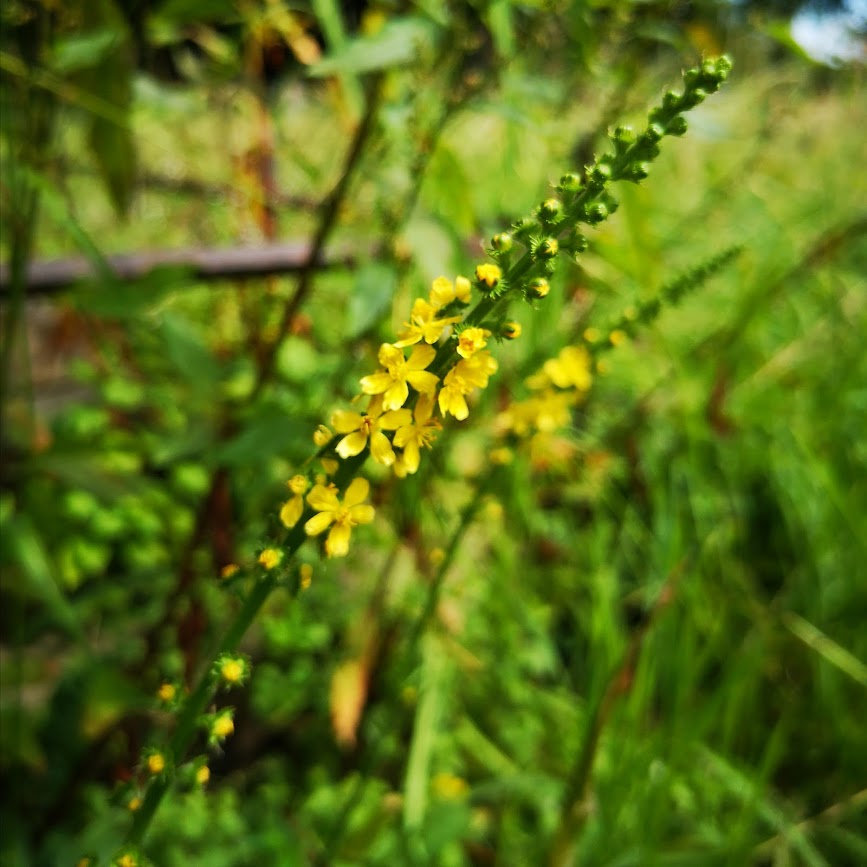
The tall, delicate spikes of Agrimony are decorated in summer with yellow flowers, giving way to rust-coloured seed cases in autumn. Because it sets seed late, it can be vulnerable to early cutting or mowing. In the language of flowers Agrimony represents thankfulness, and its common names include ‘Church-steeples’ and ‘Aaron’s rod’ as well as ‘Fairy-wand’. It has been used since medieval times as an antiseptic and astringent to help heal wounds, and when dried it can be made into a tea or a gargle for sore throats.
Buttercup
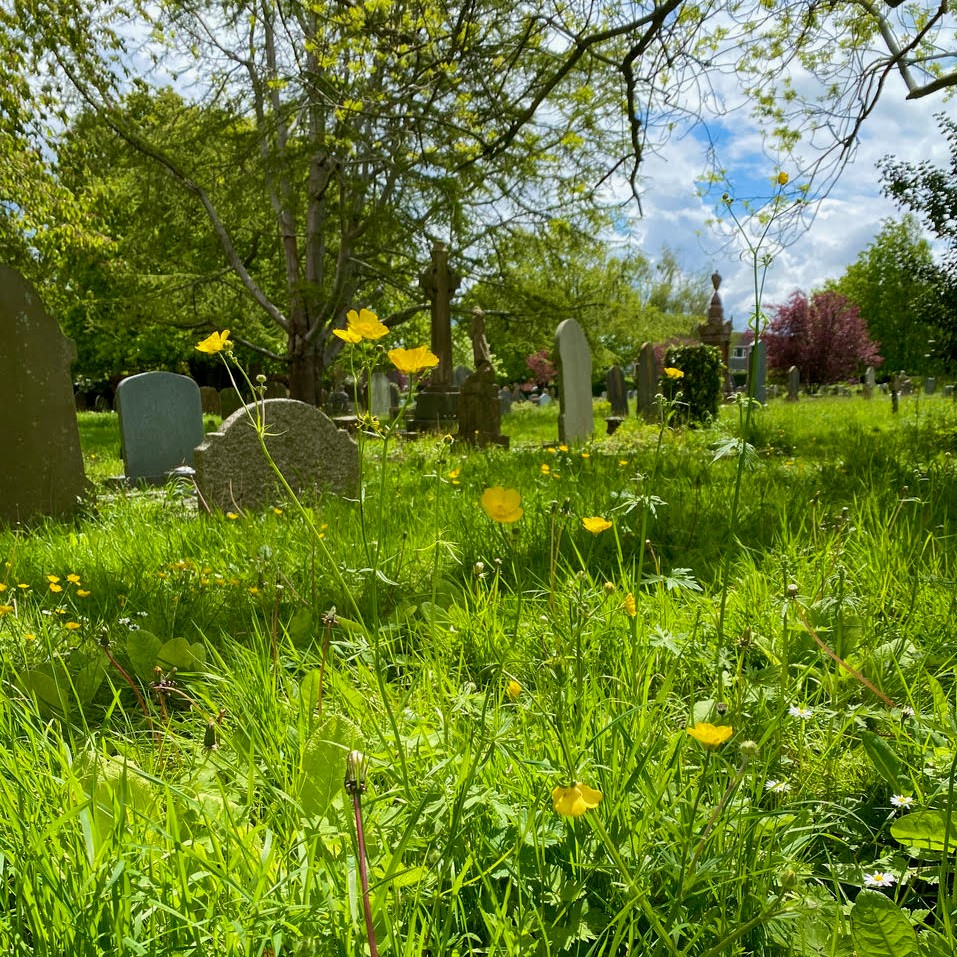
One of the first examples of flower folklore that most of us learn is holding a Buttercup under the chin to tell if someone likes butter – the answer is always yes! This is due to the surface of their petals having a special double-layered structure that reflects light in a similar way to a mirror, and even absorbs blue light wavelengths so that the reflected light appears more intensely yellow. This helps to attract insects to pollinate the glossy flowers, and it also explains why they cast such a good yellow glow on the underside of a chin. Buttercups frequently feature in medieval church carvings, including in Bristol Cathedral.
Feverfew
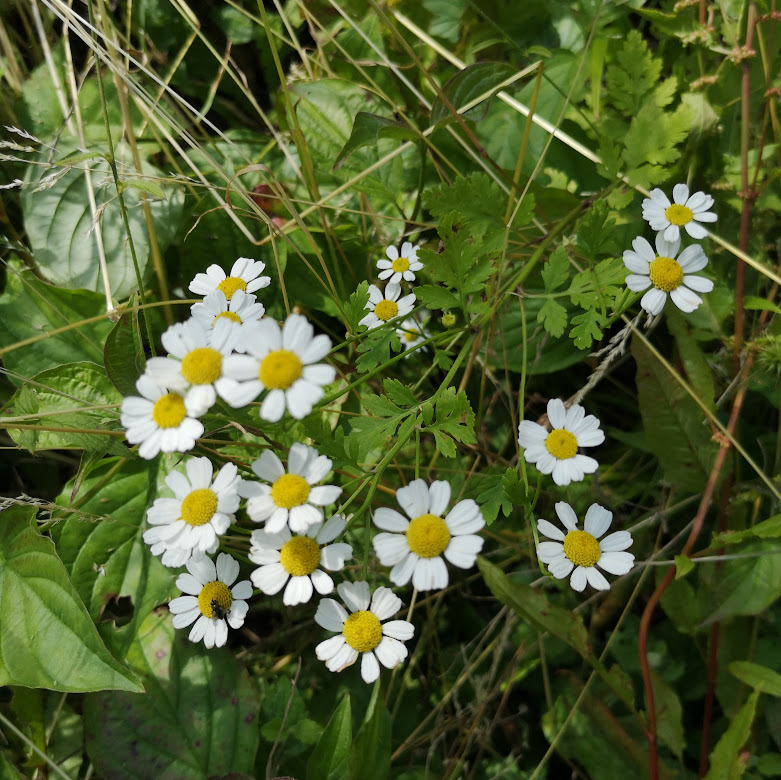
Feverfew is easily recognised by its white and yellow daisy-like flowerheads which grow in clusters above delicate feathery leaves. As the name suggests, it has a very long history of medicinal use stretching back to ancient Egypt and Greece, and it was considered a vital addition to cottage gardens for centuries due to its reputation for effective pain relief. In fact, it is still sold as a popular herbal remedy for migraines today. A local Somerset name for Feverfew is ‘Bachelor’s buttons’.
Primrose
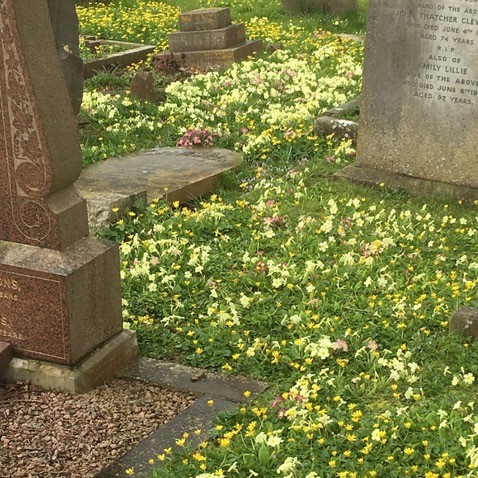
Creamy yellow Primroses dotting hedgebanks, grasslands and woodland floors are one of the earliest heralds of spring. It is not surprising then, that in the language of flowers Primroses can symbolise youth, first love or inconstancy. They can bloom as early as January, and then provide a nectar source for Brimstone and other hibernating butterflies as they emerge from their winter sleep. Primroses are said to protect against witchcraft, but only when gathered in a posy of precisely 13 flowers – any other number brings bad luck. The flowers are edible and can be used in salads or coated in egg white and sugar to decorate cakes.
Self-heal
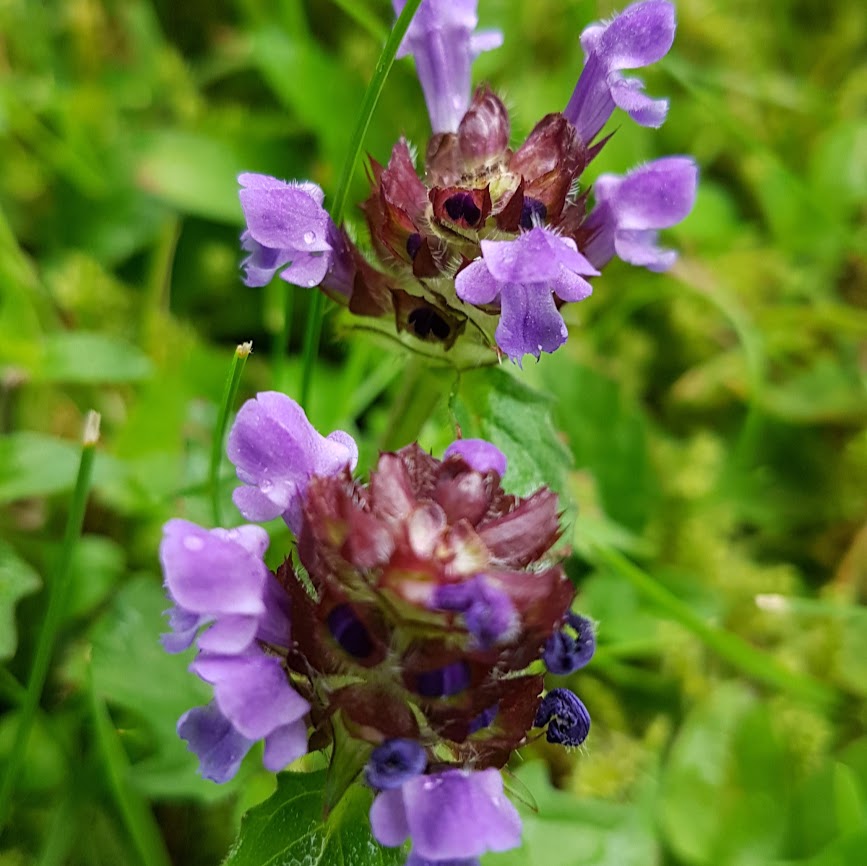
Self-heal is a low-growing plant that can be found in lots of types of grassland, including road verges and lawns. Its purple flowers grow in clusters on stubby spikes and provide valuable nectar for bees and wasps from June through to October. It has been used medicinally by a wide range of peoples and cultures including in Kashmir and North America, as it grows across many temperate regions. The Latin name Prunella vulgaris is derived from the German name for quinsy, a type of throat infection it was used to treat.
Speedwell
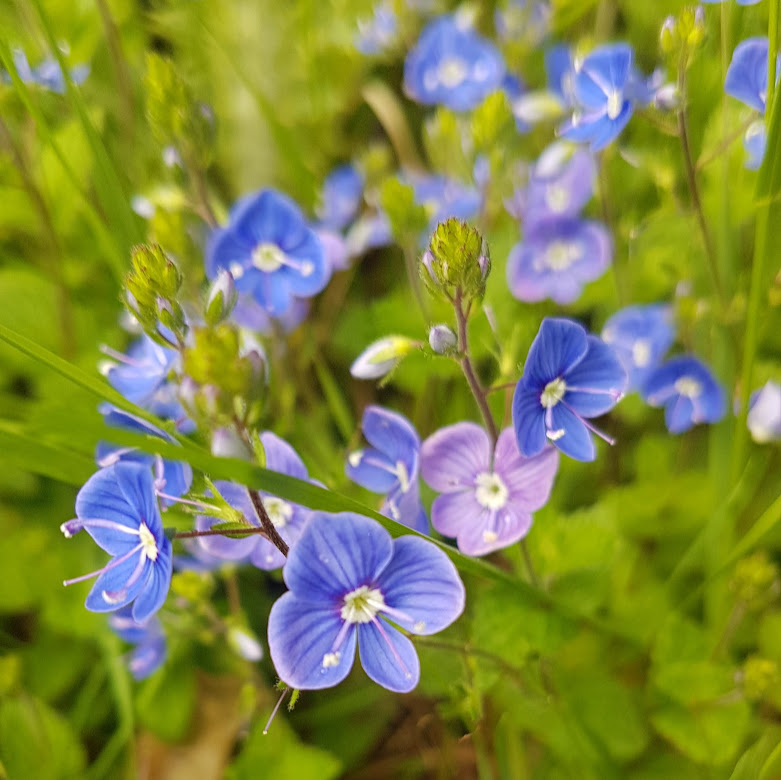
The cheery blue flowers of Speedwell grow in clumps and are particularly fond of ‘edge’ habitats such as verges and hedgerows. Their name comes from this habit, as they are considered a good luck charm to speed you on your way. In Ireland it was sewn into clothes as a charm to guard against accidents. The most common native variety, Germander speedwell, is also known as ‘Bird’s-Eye’ and some rather gruesome plant lore from the north of England tells that if you pick the flowers, a bird will peck your eyes out. Other folk names for Germander speedwell include ‘Cat’s Eye’ and ‘Eye of the child Jesus’.
Violet
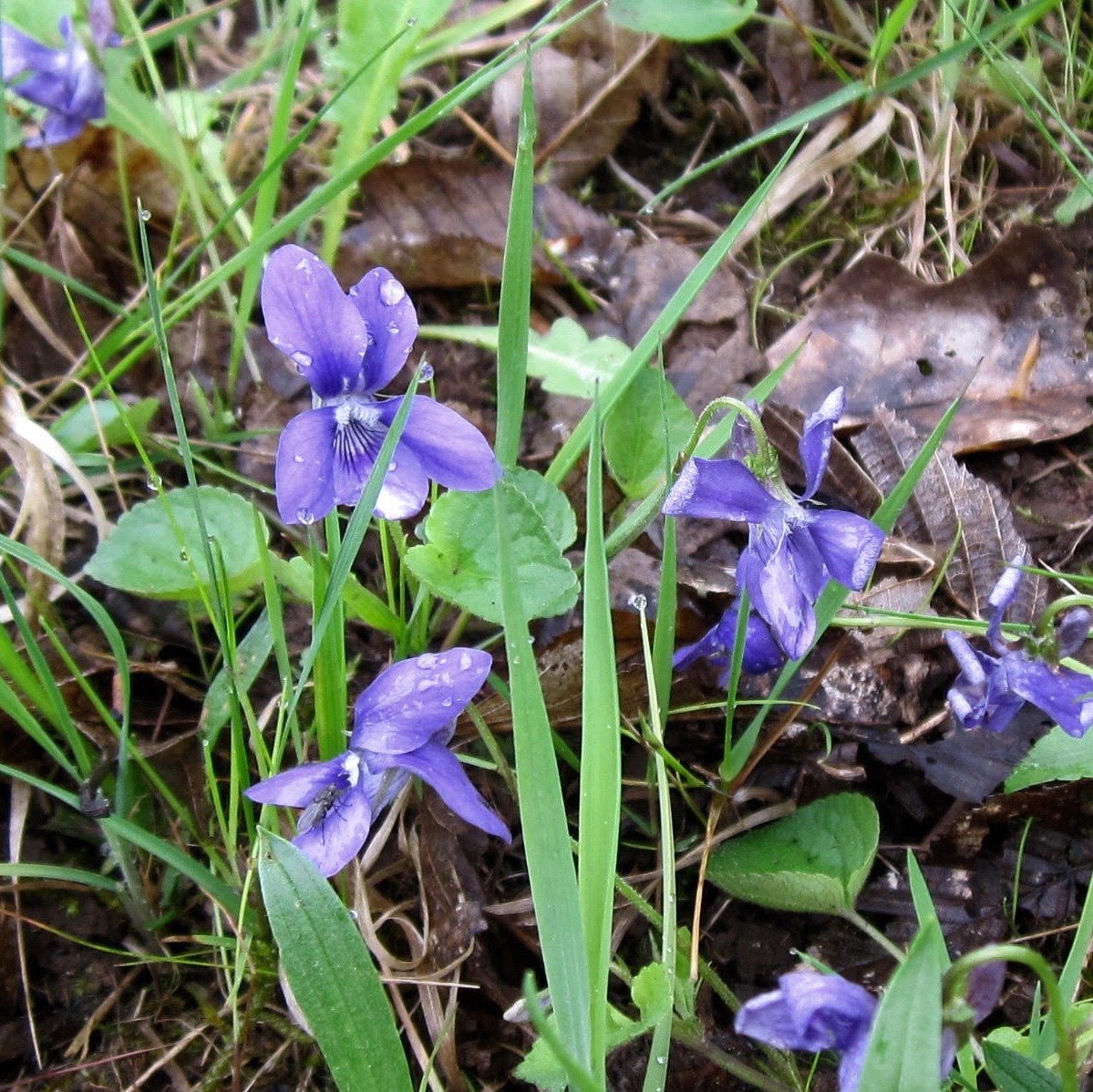
In Greek mythology Violets were one of the spring flowers that Persephone was picking from a meadow when she was carried away by Hades into the Underworld, and so they have an association with change, death and rebirth. For the Victorians however, Violets were a symbol of love and constancy and were often given to the bride and groom at weddings to be dried and kept as a memento. Finding white Violets is thought to be especially lucky, as they occur quite rarely. Violets have been used medicinally in poultices to ease swelling and rheumatic pains.
There are many more examples of wonderful names and stories attached to the plants found in the churchyard, and some of them seem particularly fitting: Field wood-rush, which grows in tufts, is also known as ‘Good Friday Grass’ because it flowers from April to May. If you’d like to find out more about the plants around you, YACWAG can be your local guide while Plantlife and The Wildlife Trusts also have superb online resources to investigate.
© Copyright YACWAG, or original authors. All rights reserved. | Registered charity 1076362 | Privacy policy | Cookie policy | Terms & Conditions |Web design: StanfordGraphics


